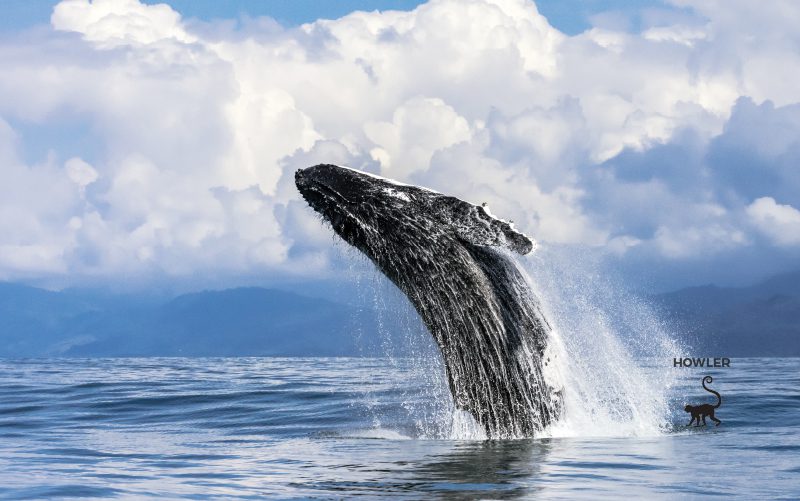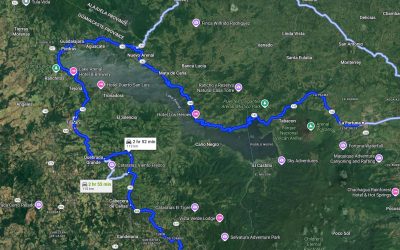I have led numerous campaigns to defend whales over the last fifty years in every ocean with many ships and hundreds of volunteer crew and there is one very important question that I ask every volunteer wanting to join my crew.
That question is: Are you prepared to risk your life to protect the life of a whale?
I have been criticized many times for asking this question. How can I ask anyone especially young people to risk their lives to defend a whale? The premise for their criticism is that the life of a whale is not worth as much as the life of a human being.
Now I happen to believe that the life of a whale is worth much more than the life of a human being because there are eight billion of us and not so many whales, but it goes to the hypocritical core of our anthropocentric values because we send young people off to war by the millions to defend oil wells, real estate, flags, religion and politics. In other words, these things are worth dying for, whales are not. We ask them not only to risk their lives but to kill others to defend whatever we decide is in our material interest to defend and fight for.
I happen to think that it is much more noble and righteous to defend whales, or any other species of wildlife being driven towards extinction because of human greed and cruelty.
Concerning the Ocean, it is also self defense because if the Ocean dies, we all die, and this makes marine conservation more of a priority than any other reason we ask young men and women to risk their lives.
It is also a very personal thing for me that began in June of 1975.
That was when I first put my life on the line to protect a pod of Sperm whales in the North Pacific from the Soviet whaling fleet.
Robert Hunter and I were in a small inflatable boat blocking the aim of a Soviet harpooner. Before us was a pod of Sperm whales.
The whales were racing for their lives, unable to take in enough air for a deep dive. They were spouting rapidly, and we could see rainbows sparkling from the mist the whales expelled into the air. We could smell their breath, we were so close, and our objective was to block the path of the harpoon.
I turned to Bob Hunter, “Well Bob this is it. Let’s do it.”
Would the Soviets risk killing a human being to slay a whale? The answer to that question was a mystery.
But there we were tempting them to give us an answer one way or another. As our inflatable boat raced before the bow, I looked back to see this ape of a man bending over behind the massive harpoon cannon trying to get one of the whales in his sight. He was clearly frustrated.
Suddenly a larger man came storming forward along the catwalk and began screaming into the ear of the Soviet harpooner. The harpooner nodded and crouched down behind his gun as the man whom we later identified as the captain stood up and looked down at us with a smile.
I saw the pod of whales rise on a swell in front of us just as the harpoon vessel rode up on a swell behind us and as our inflatables descended into the deep trough between the two large swells, a horrendous explosion boomed over the whales.
The explosive tipped harpoon whizzed through the air above us as the attached cable slashed down upon the water close by, cleaving the surface like a heavy sword.
In front of us, a female Sperm screamed in horrific pain as she rolled on her side with a fountain of hot steaming blood pouring from her side. Beside her the largest whale in the pod rose and dove as his mighty tail slapped the water with a clapping bang as he disappeared beneath the surface. The other six whales carried on as the huge male turned to defend them.
For a moment we thought he would attack us. We had all seen the old prints and woodcuts of enraged Sperm whales cutting whaleboats in half with their saber like teeth, spilling wounded whalers into the sea.
We had little time to think as the ocean exploded behind us and this great whale hurled himself from the water trying to reach the man behind the harpoon.
But they were ready for him and had quickly reloaded the harpoon gun with an unattached harpoon and as the whale rose up and out of the water, the harpooner lowered the gun, pulling the trigger. With a thundering roar, the harpoon whistled over our heads and tore into the whale’s head.
The great creature screamed, it was an excruciating cry of pain, shock, and confusion. He fell back into the sea, rolling in agony on the surface in a sea-stained sickly scarlet with his own blood.
I could not take my eyes off the dying whale. His fluke flayed the sea and pink foam frothed all around him.
And then suddenly the whale’s head broke above the surface of the sea, looking directly at me. I saw that huge eye, I could see that he saw me, and at that moment he dove once again and I saw pink bloody bubbles coming to the surface and moving closer to our boat, and within seconds the whale’s head shot above the surface of the sea and began to tower above, rising higher, but as if in slow motion and at an angle so that we could see that his intent was to come crashing down upon us.
And as his head rose ever higher, I saw that eye once again, so close that I could see my reflection in that deep dark orb, and suddenly I was struck with the realization that this whale understood what we were doing.
His lower jaw hung down almost touching the side of our inflatable boat, so close that I could have reached across and encircled one of the six-inch teeth with my fingers.
His muscles tensed and he stopped and began to slowly slide back into the sea. I kept eye contact with him until the eye sank beneath the dark shroud of the sea and disappeared.
And he died.
He could have killed us, but he had not. The look in that eye has haunted me ever since.
I felt understanding and I knew he knew that we were there to save him, not to kill him. I felt ashamed that we had failed. I felt powerless and angry, frustrated, and awed all at once. I felt indebted to him for sparing my life.
But I also saw something else in that eye and that was pity.
Not for himself nor his kind, but for us.
An uncomfortable pallor of shame fell over me as I sensed what the whale perceived and it was indeed a pity, but pity for us, that we could take life so ruthlessly, so thoughtlessly and so mercilessly, and for what?
As we sat there in our little inflatable boats amid the Soviet whaling fleet with the bodies of a half dozen Sperm whales lying lifeless in the swell, I watched the sun begin to set in the West and it occurred to me that the Russians were killing whales primarily for the valuable Spermaceti oil.
Spermaceti oil is valued for its high resistance to heat and thus it is used in machinery where there is excessive heat one of the demands for this oil by the Soviets was for use in the production of Intercontinental Ballistic Missiles.
And here they were slaughtering these magnificent, intelligent, socially complex, wondrous sentient beings for the purpose of making a weapon designed for the mass extermination of human beings.
And I thought to myself, are we really this insane?
And it is that thought, that unanswered question, that has haunted me every day since.
And it is what I saw in the eye of that whale that has led me to devote my entire adult life to the defense of the whales and the other creatures of the sea because I know that if we cannot save the whales, the turtles, the sharks, the tuna and the complex biodiversity of our oceans, that the oceans will not survive and if the life in our oceans is diminished, humanity is diminished and if the Ocean die, humanity will die, for we cannot survive on this planet with a dead ocean.
Since that day in 1975, I have put my life on the line many times. Hunting down and destroying the pirate whaler Sierra in 1979, sinking half the Spanish whaling fleet in 1980, engaging in a confrontation with the Soviet navy off Siberia in 1981, sinking half the Icelandic whaling fleet in 1986, Engaging the Norwegian Navy in 1994 where we were fired on, depth charged and rammed, sinking four Norwegian whalers between 1992 and 2005 and confronting the Japanese whaling fleet in the Southern Ocean every year between 2005 and 2017.
In all these engagements, not a single person was killed or injured. My strategic approach of aggressive non-violence allowed us to shut down whaling in Australia, Spain, the Soviet Union, South Africa and the Japanese fleet in Antarctic water.
But each time in every confrontation I had to make the decision to risk my life and freedom to achieve positive results for the whales and each time I asked my crew to do the same and they did.
Having a harpoon fired over our heads by the Soviet whalers established Greenpeace as a credible and inspirational organization that became a worldwide movement. Hunting down, ramming, and destroying the pirate whaler Sierra established Sea Shepherd as a credible and inspirational organization that became a movement.
I do admit that my aggressive non-violence leads to controversy and although such audacious risks can ignite a movement, it also provokes fear and insecurity in people I thought I trusted, leading to my being ousted, first from Greenpeace and then by Sea Shepherd Global.
So now that I have established the Captain Paul Watson Foundation and Neptune’s Pirates it is time to once again take extraordinary risks to prevent the slaughter this coming summer in the waters off Iceland where a modern day Captain Ahab by the name of Kristjan Loftsson has made it clear that despite the fact that the majority of Icelanders oppose whaling that he intends to kill hundreds of endangered Fin whales.
I intend to stop him and that means taking risks.
As Captain John Paul Jones once said. “It seems to be a law of nature, inflexible and inexorable, that those who will not risk cannot win.”
So in order to prevail we must be prepared to risk our ship, our lives, and our freedom.
When I take my ship the John Paul DeJoria to Iceland this summer, I will be taking a crew fully committed to blocking and stopping the viciously cruel harpoons of the last obsessive sadistic serial killer of Whales – Kristjan Loftsson.
We are prepared to sail into harm’s way to defend and protect the endangered Fin whales in the Denmark Strait.
It’s time for a showdown with Iceland’s personification of the malicious spirit of Captain Ahab.






